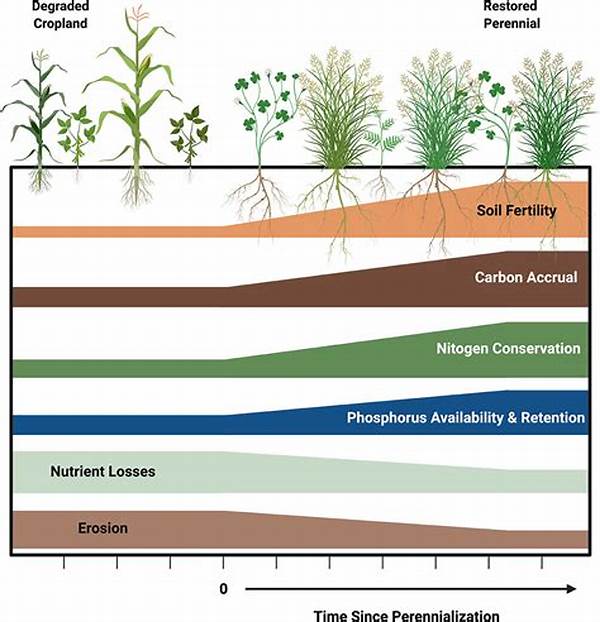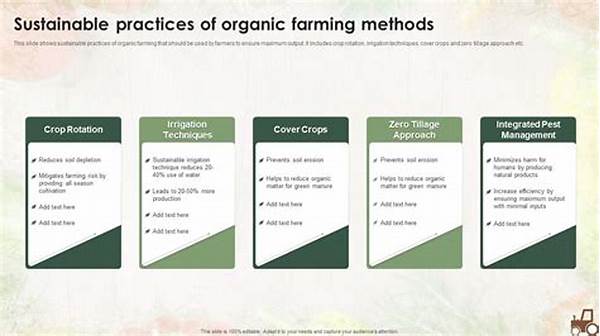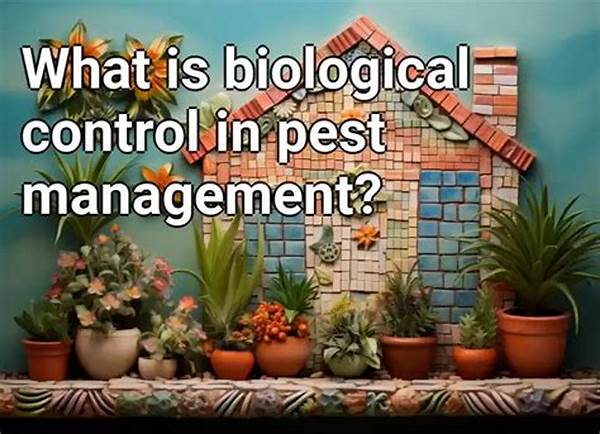When we talk about agriculture and sustainability, two buzzwords often surface: soil fertility and crop diversity. These two elements are not just fundamental to farming; they are the very backbone of sustainable agriculture and the global food system. Picture this: healthier soil means more nutrient-rich crops, which in turn results in healthier people and a healthier planet. Imagine a world where diverse fields ripple across the landscape, robust against pests and weather extremes, thanks to crop diversity. These are not just ideals; they are necessities, especially in a world facing the challenges of feeding an ever-growing population.
Read Now : Climate-friendly Courier Service Alternatives
The Synergy Between Soil Fertility and Crop Diversity
The relationship between soil fertility and crop diversity is synergistic—a dazzling dance between Earth and its gifts. As crop diversity increases, soil fertility naturally follows. Picture the myriad of roots weaving through the earth, each enriching it in unique ways. This tapestry of roots can break up compacted soil, fix nitrogen, and return organic material as they decompose. Crop diversity also improves soil’s water retention capabilities, leading to more resilient ecosystems. However, reversing this approach, maintaining diverse crop rotations and perennial crops helps preserve and even enhance soil fertility. When soil is fertile, it provides countless nutrients back to diverse crops, completing the circle of vitality and abundance. Our environment thrives, pests and diseases are kept in check, and the use of chemical fertilizers and pesticides diminishes, leading us toward a truly sustainable agriculture.
How Soil Fertility Enhances Crops
1. Strengthening Nutrient Cycles: Soil fertility ensures essential nutrients like nitrogen, phosphorus, and potassium circulate effectively. Diverse crops utilize and replenish these nutrients, ensuring sustainability.
2. Enhancing Organic Matter: Fertile soil is rich in organic matter, which breaks down to nourish crops. Crop diversity contributes to organic decomposition, improving soil structure and fertility.
3. Improving Water Retention: Soil fertility enhances water-holding capacity, reducing irrigation needs. Crop diversity further strengthens this attribute by providing varied root structures that capture moisture.
4. Resilience Against Pests: A combination of soil fertility and crop diversity results in natural pest resistance, eliminating the need for harmful pesticides. Healthy soil and diverse crops boost plant immune systems.
5. Reducing Erosion: Fertile soil is better bound and less prone to erosion. With crop diversity, soil coverage improves, further protecting against degradation and loss.
Read Now : Sustainable Agriculture With Compost
The Importance of Maintaining Soil Fertility
Achieving and maintaining soil fertility is an investment with infinite returns. Fertile soils are the very essence of life on earth; they fuel not only agricultural productivity but also safeguard our ecosystems. Investing in soil fertility today is investing in food security for future generations. When we neglect our soils, we compromise not only the productivity and quality of our crops but also the balance of nature. Conversely, when we champion soil fertility and crop diversity, we position ourselves as stewards of the land, securing a future where agriculture can thrive alongside environment conservation. Additionally, the economic benefits are considerable. Healthy soils lead to higher yields, less expenditure on fertilizers, and crops of higher nutritional value, paving the way to prosperous farming communities worldwide.
Implementing Crop Diversity for Enhanced Soil Fertility
The Global Impact of Soil Fertility and Crop Diversity
Soil fertility and crop diversity are more than farming practices; they are global mandates. The health of soils is directly linked to climate change mitigation. Fertile soils sequester carbon more effectively, reducing the greenhouse gases in our atmosphere. Crop diversity further assists by enhancing the earth’s ability to adapt to climatic changes. Imagine communities worldwide where farmers celebrate diverse yields, protected from natural disasters, erosion, and economic strain. By dedicating ourselves to these practices, we strengthen food security, support biodiversity, and ensure sustainable livelihoods. Without diversity in our fields and richness in our soil, our journey towards a sustainable future is severely hindered.
Future Perspectives
Envisioning the future of agriculture without prioritizing soil fertility and crop diversity would be akin to building a house on quicksand. Our survival hinges on the sustainable management of these resources. As we look ahead, let us commit to these land stewardship principles for the longevity of our planet. As we adopt sustainable practices, we create resilient ecosystems, healthier communities, and a thriving global economy. By championing the cause of soil fertility and crop diversity, we are laying the foundation for a sustainable future where everyone can reap the benefits of our earth’s bountiful gifts. Let’s honor the wealth beneath our feet and the plurality in our fields to transform agriculture into a beacon of hope.
Call to Action
The time for passive observation is past. We must each become an advocate for soil fertility and crop diversity in our own ways. Plant diverse gardens, support farmers who engage in sustainable practices, and educate others about the impact these elements have. Remember, every journey toward a sustainable future begins with a single, informed step of action. As stakeholders in the world’s future, it is our collective responsibility to embrace and champion these agricultural practices. Together we can secure a resilient and nourishing earth, from its depths to its harvests.



